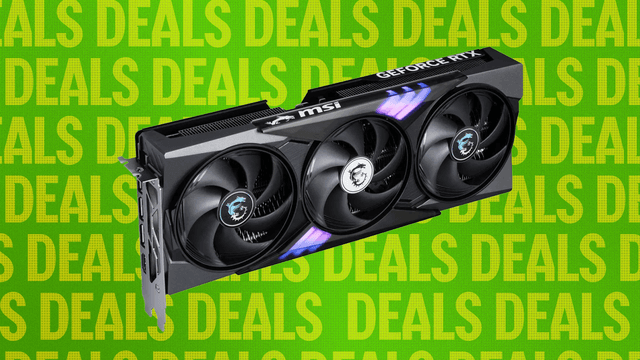All products featured on WIRED are independently selected by our editors. However, we may receive compensation from retailers and/or from purchases of products through these links. Learn more.
Since I first started reviewing air purifiers for WIRED in 2018, I’ve tested dozens and dozens of the health-protecting appliances, usually for months at a time. I started out looking into how to improve the air quality in my apartment, and now I write about good air hygiene and test air quality monitors year-round in addition to purifiers.
Because I test them in my real life, I've used air purifiers in small rooms, big rooms, classrooms, an urban apartment, and a cabin in the country. I've used them on bad air days, good air days, and in locations with pets, children, and lack of proper kitchen exhaust. And while cost and warranty length are all factors in what garners a WIRED recommendation, there is an overall question that each purifier needs to answer: Will users understand how to use the air purifier effectively? One might think that unboxing and hitting the power button is all there is to know, but there’s more to it when choosing a good air purifier.
To Your Health
WIRED has noted the increasingly popular trend of air purifiers cosplaying as pieces of furniture or wall art. We’ve covered air purifiers as sculptures and statement pieces, such as the Atem X below, but we never recommend air purifiers based on looks alone.
There's a reason why so many employees are able to purchase air purifiers using their Flexible Spending Accounts (FSAs) for conditions that an air purifier will alleviate. Air purifiers are preventative health care, and with proper use they can mitigate indoor air pollution. The right machine will clean the air of invisible particulate matter or PM 2.5 and, depending on the filter, volatile organic compounds (VOCs). We humans spend an awful lot of time indoors. It’s estimated that the average American will spend upward of 90 percent of their time inside. And as the outdoor air becomes less regulated, good indoor air is an essential component to better health outcomes.
Are Air Purifiers FSA Eligible?
While air purifiers are not guaranteed to be FSA eligible, they can be for certain medical conditions with a letter of medical necessity. Many of the air purifiers we review have a dedicated FSA FAQ on the brand's website. Air purifiers used for the treatment or cure of an existing condition can qualify for FSA coverage, so take advantage if possible.
Out of the Box
I’ve tested air purifiers as light as 2 pounds and as heavy as 50 pounds. The first thing I’ll notice when I’m unboxing a purifier is my ability to lift the machine out of the box. If it’s heavy, I’ll ask for help or I’ll put the box on its side to slide the product out of its shipping container. On more than one occasion I’ve had nothing to grip and there’s no handle. This becomes especially difficult with cylindrical models with slick finishes.
If I put a box on its side and cannot grasp the product to lift it from its box, then that’s the first strike. WIRED considers accessibility, and this means handles and wheels on heavier air purifiers. When I review a unit, I think about those with less upper body strength moving the appliances, and whether they'd be able to maneuver it around their home. I move air purifiers all around my apartment; I shouldn’t have to bend at the knees to adjust a purifier's location.
After an air purifier is unboxed, it’s time to pair it with its app. Not all the air purifiers WIRED tests have an app, but if one does, the pairing process should not be complicated, nor should it require a lot of time. The best user experience is when an air purifier has a QR code that opens the app and adds the device. An app with a simple dashboard, graph that corresponds to the AQI color codes, and a smart remote is usually all that’s needed, though it’s a bonus if the app gives the filter life expectancy.
I prefer a simple power bar design that shows the percentage of filter life used. And while air purifier models give recommendations for when to replace the filter, like every six months, or when the replace filter indicator light glows on the appliance, nothing beats the heads-up of knowing exactly how much filter life has been used.
Internal Air Sensors, Lights, and Scores
While some air purifiers had internal air sensors when I first started testing in 2018, the majority of current purifiers we test now have them. If the purifier has internal sensors, there is usually an indicator light. Next question: Does the air purifier have an easy-to-see or read indicator light or air quality index (AQI) score? If it’s a smart air purifier, then the sensor's readings feed into the device’s app. And I prefer an indicator light that follows the EPA’s color codes for the air quality index. That means green for good air, yellow for moderate, orange for unhealthy for sensitive groups, red for unhealthy, purple for very unhealthy, and maroon for hazardous. There are some companies, like Coway, that have their own take on the color codes, which can be confusing.
While Coway’s air purifiers are consistently WIRED’s top-rated picks, if I could change one thing about them, it would be their custom color scale, where blue means good and green means moderate. More and more air purifiers are also displaying their internal sensors' air quality numbers. Most times, air purifiers will show a reading of PM 2.5. If the internal sensor senses an uptick in PM 2.5, the auto mode will trigger a higher fan speed, the indicator light might show orange and red along with the PM 2.5 number like 100. I should be able to see that light across the room, and the numbers should be easy to read.
Then there are some models, like those from Shark, that use their own scoring system. A score of 100 represents good air on the display of Shark's NeverChange, for example, but 100 PM 2.5 would be considered unhealthy.
Noise and Size Matter
I think the labeling on air purifiers is confusing on purpose. Often the square footage listed on a product is for one air exchange per hour at the purifier’s highest setting. An air exchange is how many times an air purifier can clean the air of a room in an hour. The US Centers for Disease Control and Prevention recommends five air exchanges an hour. If you have a 200-square-foot room, your air purifier needs to be able to pull the air of the room into the filter using the fan. That air runs through the filter, PM 2.5 and VOCs are captured by the filter, and the clean air is released back into the air at least five times in an hour. Often, WIRED won’t recommend air purifiers that can only clean unusually small spaces. And while those cute tabletop or miniature air purifiers seem like an easy solution, they are usually too tiny to effectively clean the air in an average-size room.
WIRED also uses a decibel meter to check the manufacturer's decibel claims. Most of the time, the decibels are close to those listed on the purifier’s user manual. Sometimes they are louder. What’s too loud? The hum of a refrigerator is somewhere between 40 and 50 decibels; a conversation is around 60 decibels. Ideally, an air purifier should be able to clean the air in your room five times an hour without sounding like a conversation. And if an air purifier is louder—a lot louder—than the manufacturer claims, we’ll include that in our review or won’t recommend it.
If an air purifier is too loud at its highest fan setting, users are likely to turn down that fan speed to a quieter and less effective setting, rendering the air purifier into nothing more than a wellness prop. Another issue WIRED takes into account is when the air intake overpowers the external vents, causing unsightly clumps of pet hair to accumulate on the outside of the air purifier.
Magnetic Side Panels
More and more air purifiers have magnetic side panels that make for easy filter access. And when those magnets are strong, usually on a flat surface, they work especially well. One of WIRED’s top purifiers, RabbitAir’s A3, has an especially sturdy front panel that stays in place with four magnetic fixtures. This is what we want. A common issue with panels that utilize magnetized closures is that when they're on curved surfaces, like those on cylindrical models, they seem to come undone to the touch.
Cost and Warranties
We've reviewed air purifiers in a rage of costs from less than $100 to more than $1,500. We highlight both affordable options and higher-end investments, always on the lookout for the best options for our readers. It’s tempting to highlight a low price point when reviewing air purifiers, and sometimes we'll do this, but it's important to consider that a well-made air purifier will cost less in the long run, even if it costs more upfront.
Unlike a game console, speaker, or air fryer, an air purifier is more than an appliance: It’s preventative health care. And often, more expensive air purifiers come with longer warranties. For example, models from the IQAir series (like the MultiGas XE, above) come with a 10-year warranty, making them an excellent long-term investment. Also keep in mind that filters can be expensive. Some filters alone cost more than a small room air purifier, but anecdotally, I’ve noticed that the larger the air purifier’s filter surface area, the less often they’ve needed replacing.
We update our guide to the Best Air Purifiers frequently, so make sure to check back often for our latest recommendations and notes on longer-term testing.




.jpg)



.jpg)
.jpg)


















